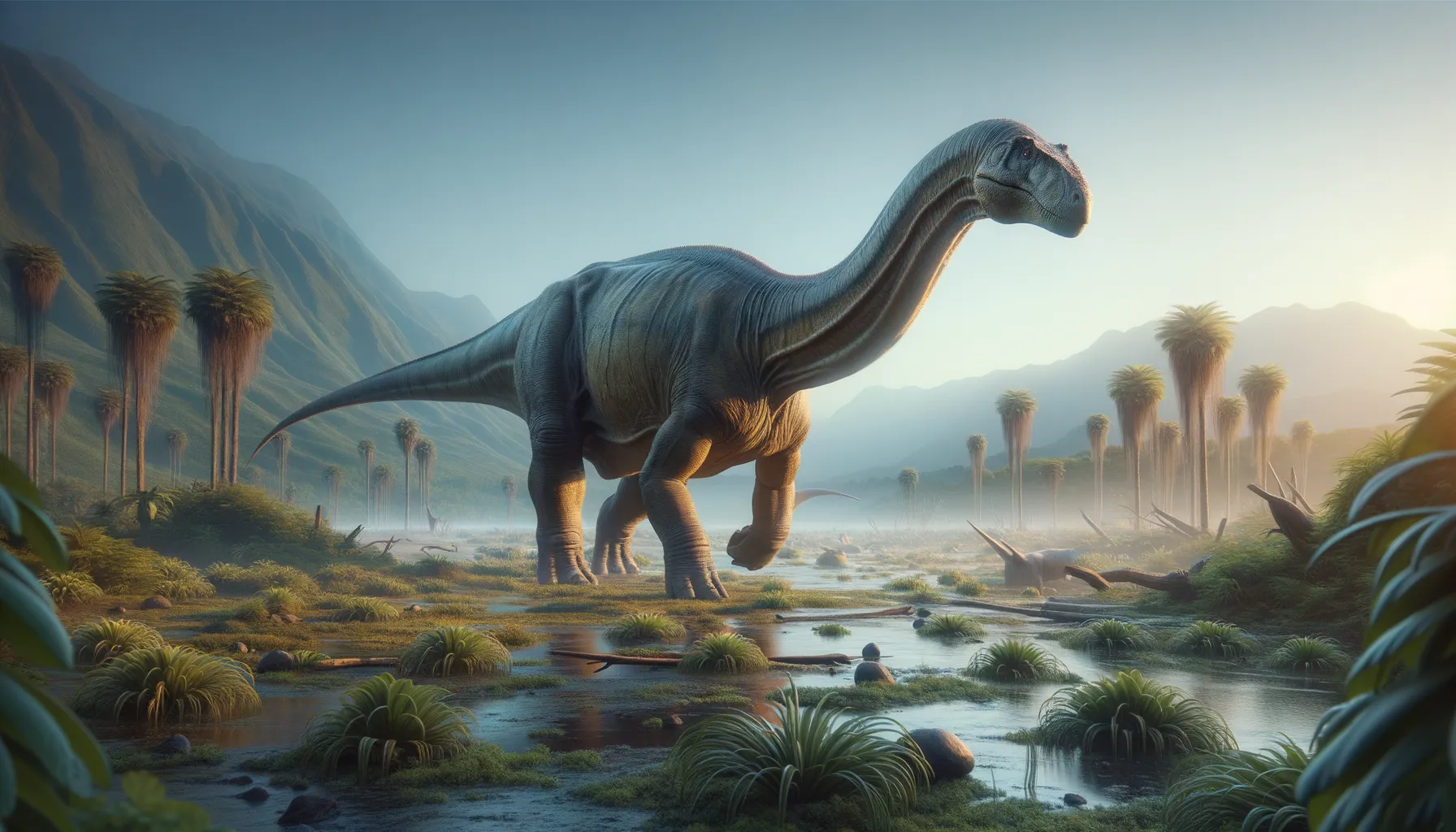
Zhuchengtitan
A gentle giant of the ancient world.
Period
Cretaceous
Length
Estimated length of around 30 meters.
Height
Estimated up to 15 meters tall.
Weight
Possibly over 40 metric tons.
Zhuchengtitan was an enormous dinosaur that lived during the Late Cretaceous period. As a member of the sauropod family, it was characterized by a long neck and tail, and it walked on four sturdy legs. This gigantic herbivore roamed what is now China, peacefully grazing on vegetation. Its discovery added valuable insights into the diversity and distribution of large dinosaurs in prehistoric Asia.
Diet
Zhuchengtitan was a herbivore, meaning it consumed plants. Its diet likely consisted of various trees, ferns, and shrubs that were common in its Cretaceous habitat.
Hunting
Being a plant-eater, Zhuchengtitan did not hunt for prey. Instead, it spent much of its time foraging for plant materials.
Environmental challenges
Zhuchengtitan faced environmental challenges such as changes in vegetation due to climate shifts. It had to adapt to evolving plant life and potential competition from other herbivores. Natural predators, although infrequent due to its massive size, also posed occasional threats to the young or sick individuals.
Speed
Relatively slow due to its massive size.
Lifespan
Approximately several decades.
First discovery
Discovered in Zhucheng, China, in 2011.
Fun Facts
- Zhuchengtitan was a giant sauropod dinosaur that lived during the Late Cretaceous period, about 70 million years ago.
- The name 'Zhuchengtitan' means 'Zhucheng giant' and it was named after the Zhucheng area in China where its fossils were found.
- Zhuchengtitan was part of the Titanosauria family, known for being some of the largest land animals to ever exist.
- Fossils of Zhuchengtitan suggest it had a long neck and tail, traits commonly associated with sauropods, which helped it reach high vegetation.
- The discovery of Zhuchengtitan adds to the evidence that China was home to a diverse range of dinosaur species during the Cretaceous period.
- Zhuchengtitan is believed to have coexisted with other giant dinosaurs in what would have been a rich ecosystem full of various plant and animal life.
- The fossils of Zhuchengtitan help scientists understand the distribution of sauropods in Asia and their evolutionary history.
Growth and Development
Zhuchengtitan went through rapid growth phases during its early years, reaching considerable size to deter predators. Its development required a substantial intake of food to support its enormous body. The growth rate slowed as it approached full size, allowing more efficient energy use.
Habitat
Zhuchengtitan inhabited lush, green landscapes with abundant plant life. Its habitat included river valleys and floodplains, offering plenty of water resources. This environment supported a variety of other dinosaur species, contributing to a rich ecosystem.
Interaction with other species
Zhuchengtitan coexisted with various dinosaur species, participating in a diverse ecological network. It likely encountered other herbivores competing for food. Its large size deterred most predators, providing a relatively peaceful coexistence.
Natural lifespan
Zhuchengtitan may have lived up to several decades.
Reproduction
Zhuchengtitan, like other sauropods, laid eggs. The reproductive strategy involved laying a significant number of eggs to increase the chances of offspring survival. The eggs were likely buried or hidden to protect them from predators.
Social behaviour
Zhuchengtitan may have displayed social behaviors typical of large herbivores, possibly moving in groups for protection. Such herding behaviors would also facilitate finding food resources and safeguarding young dinosaurs. Parental care was likely limited after laying eggs.
Fossil locations
Zhuchengtitan fossils have been primarily found in Shandong Province, China. The initial discovery in 2011 occurred in a region known for yielding numerous dinosaur fossils. Ongoing excavations in the area continue to provide insights into its prehistoric ecosystem.
